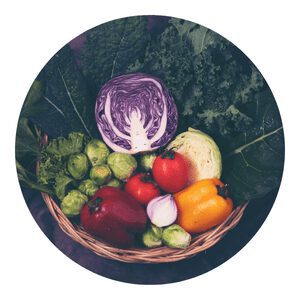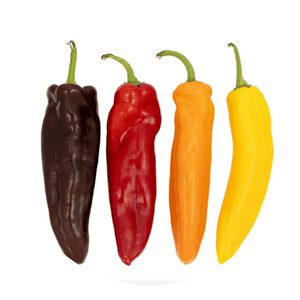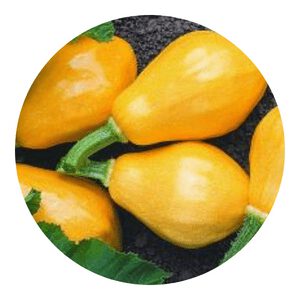How To Grow Organic Pepper
Organic pepper is a popular choice for its robust flavor and health benefits.
It can be expensive to buy from the store, but growing your own pepper at home is surprisingly easy.
With just a few supplies, you can easily grow your own organic pepper in the comfort of your backyard or even in containers inside your house.
Growing organic pepper does require dedication and hard work, but it will be well worth it when you get to enjoy its freshness and taste.
Pepper Menu
What is Organic Pepper?
Organic pepper is an increasingly popular choice for home gardeners and farmers alike.
It is a pepper grown without the use of synthetic fertilizers, pesticides, or herbicides.
This type of farming reduces environmental damage and has significant health benefits for those who consume it.
Organic pepper has many different varieties, ranging from sweet to spicy and all the way to superhot peppers like the Carolina Reaper, so there is something for everyone!
Organically grown peppers boast a wide variety of nutrients including vitamins A and C as well as carotene.
These peppers also contain important minerals such as magnesium, calcium, potassium and phosphorus which help in maintaining optimum health.
Not only do organic peppers taste great but they can also add color and texture to any meal or dish with their vibrant hues ranging from reds to greens to yellows.
Preparation: Soil and Seeds
When it comes to growing organic peppers, there is one thing that all gardeners need to consider: soil and seed preparation.
Properly preparing the soil and seeds are essential for successful pepper cultivation.
Before planting, the soil should be tilled thoroughly to a depth of 10-12 inches.
This will help aerate the soil and give peppers plenty of room to grow.
Adding a layer of organic fertilizer or compost is also beneficial for helping the roots establish and providing nutrition throughout their life cycle.
Additionally, using a pH test kit can help ensure that your chosen location has an appropriate acidity level for optimal growth (6-7 pH).
Seeds should be soaked in water overnight before being sown into the prepared soil beds.
This will help kickstart the germination process and give them an extra boost as they start taking root in their new environment.
Planting: Growing Tips
Planting your own pepper plants is an exciting way to shake up your garden and spice up your dishes!
Growing peppers can be a rewarding experience, but there are some tips that you should keep in mind when it comes time to plant.
With the right techniques, you can grow delicious organic peppers that will add flavor and nutrition to your meals.
Here are some tips for planting organic pepper plants so they will thrive.
When selecting a spot in your garden to plant peppers, make sure it’s somewhere sunny with well-drained soil.
Peppers need a lot of sunlight and won’t do well if planted too close together or near other vegetables as this can cause competition for resources like water and nutrients from the soil.
Additionally, adding compost or fertilizer will help ensure the plants get enough nutrients for healthy growth.
Pest Control: Natural Remedies
Pest Control: Natural Remedies.
Growing organic peppers is a great way to enjoy fresh, delicious produce that you can feel good about eating.
But pests can be a major issue when it comes to growing any type of vegetable, and peppers are no exception.
Fortunately, there are plenty of natural remedies available for keeping pest populations at bay without resorting to harsh chemical treatments.
Here’s what you need to know about naturally controlling pests in your pepper plants.
The first step in natural pest control is prevention: practice good garden hygiene and keep the area free of weeds and other debris that can attract insects or rodents.
Planting disease-resistant varieties of pepper can also help reduce the risk of infestation from certain insect species.
For example, some types of peppers have thicker skin which makes them less vulnerable to aphids or other piercing insects.
Our pepper plants are grown organically, Sprinkled with soil that's enriched naturally. Bright yellow flowers soaks in sunshine's warmth, Ripening on the vine we wait to reform. Red, yellow, green befall beneath the vine, Savory aromas fill this garden of mine. Cutting into our pepper reveals a crunchy bite, These flavors are pure and just right!
Chappy The Gardener
Harvesting: When to Pick
Harvesting is an important step in growing organic peppers.
Knowing when to pick the peppers helps ensure that they have reached their full flavor and nutritional potential.
The timing of the harvest varies depending on the type of pepper being grown, but there are a few general guidelines gardeners can follow to get their peppers at just the right time.
First, it’s important to note what color a pepper should be when it’s ready for harvesting.
Hot varieties such as jalapeno and habanero should generally be picked when they are bright green or red, while bell peppers should retain their green hue until they reach full size before transitioning into yellow, orange, or red tones.
Attaining the desired color is usually the best indicator that a pepper has reached its peak ripeness and maturity level.
Different Types of Peppers
Peppers are an essential ingredient in many international cuisines and they can also be a great addition to any home garden.
Growing peppers organically is easy, although there are different types of peppers which can require different growing conditions.
From mild bell peppers to fiery habaneros, the variety of flavors and textures that peppers offer is extensive.
Bell peppers have a sweet flavor and come in many colors including red, green, yellow, orange, purple and even chocolate brown.
Hotter varieties such as jalapeño or cayenne add richness to dishes without overwhelming them with spice.
Habaneros offer the most heat of all pepper varieties; their intensely spicy flavor pairs well with sauces, stews and salsas.
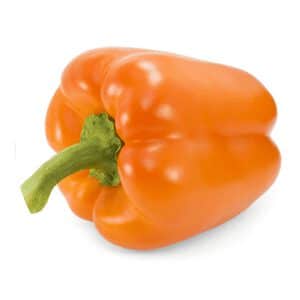
Bell Pepper
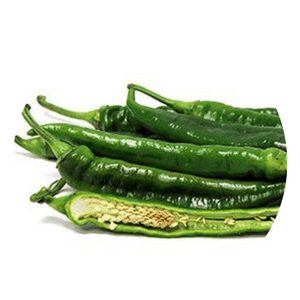
Basque Fryer

Piquillo

Banana

Chilaca

Cherry
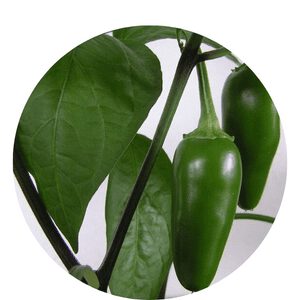
Jalapeño
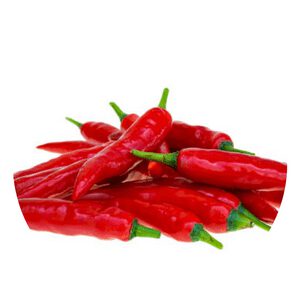
Tabasco
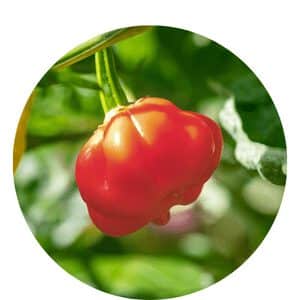
Habañero
Benefits of Organic Fertilizer for Pepper Plants
Organic fertilizer is key for achieving healthy and productive pepper plants.
By using organic fertilizer, gardeners can ensure their crops are getting the best possible nutrition without compromising their environmental impact.
Organic fertilizers not only improve the fertility of soil, but also provide helpful micronutrients that help pepper plants to resist disease and pests.
Organic fertilizers have several distinct benefits over chemical-based options which can make them a great choice for growing peppers organically.
What Type of Organic Fertilizer is Best for Peppers?
Organic gardening is becoming increasingly popular as more people realize the importance of sustainability and reducing their carbon footprint.
Peppers are one of the most common vegetables grown in gardens, so it’s essential to understand which organic fertilizers will help them thrive.
The type of fertilizer used for peppers should provide nutrients such as nitrogen, phosphorus, and potassium, along with other trace elements that can support healthy plant growth.
When selecting an organic fertilizer for peppers there are several factors to consider including the types of nutrients available in the soil and climate conditions at your location.
Organic compost or manure are excellent options as they contain a balanced range of nutrients needed by pepper plants.
How to Grow Peppers at Home
The first step in growing organic peppers is choosing the right variety for your climate.
Peppers thrive in warm climates but may need protection from extreme heat or cold conditions.
Once you have selected the right pepper type for your area, it’s time to prepare the soil by adding compost or manure for extra nutrients.
Be sure to water regularly and provide adequate drainage so that your plants don’t get too soggy.
Storage: How to Store
As the demand for organic produce continues to rise, so does the need for effective storage techniques.
Storing organic peppers correctly can make a big difference in their taste and nutritional value.
To ensure your organic peppers stay fresh and flavorful, here’s everything you need to know about properly storing them.
When it comes to storage, the best place for your organic peppers is in a dry spot with plenty of air circulation.
For maximum freshness, keep them in an open plastic or mesh bag away from other fruits and vegetables that may ripen too quickly and release ethylene gas which can prematurely spoil the peppers.
Store them at room temperature away from direct sunlight while avoiding extreme temperatures as they can cause condensation on the pepper’s skin which will then lead to mold growth.
The fresher you keep your organic peppers, the better they’ll taste!
How long does pepper take to grow?
Peppers are a popular vegetable for gardeners, offering a host of delicious flavors and colors to choose from.
But, how long does it take to grow organic peppers?
Depending on the variety and climate, the average pepper plant can take anywhere from 2 months to 4 months before it is ready for harvest.
Gardeners have many options when growing peppers.
Growing them in containers allows for easy transport between sunny spots and also allows for control of soil conditions.
In-ground planting offers an extended growing season but comes with more challenges such as weeds and soil health maintenance.
Planting seeds indoors several weeks prior to the last spring frost date is another option that gardeners should consider when planning their pepper crop.
Once planted, peppers require regular watering and fertilizing throughout their growth cycle in order to produce high yields of sweet fruits.
What month do you plant peppers?
What month do you plant peppers?
Is a question that many gardeners have when looking to grow their own organic peppers.
Pepper plants generally need warm temperatures and plenty of sunlight in order to thrive, so it’s important to wait until after the last frost has passed before planting your seeds or seedlings outdoors.
Depending on where you live, this may be as early as late February or March, but more typically occurs in April or May.
When shopping for seeds or seedlings, look for varieties that are suited to your local climate and have been bred specifically for outdoor growing conditions.
How late can I start pepper seeds?
Peppers are a beloved vegetable that can be found in many dishes.
Growing them at home is not difficult and can bring great rewards.
You’re never too late to start growing peppers!
Starting the process in mid-summer or later is totally doable and will still allow time for harvesting before winter arrives.
The key factor is planting your pepper plants early enough so they have time to mature before cold weather sets in.
If you live in a warm climate, then starting your seeds as late as August or September might still work for you depending on the type of pepper plant that you choose and how much room it needs to grow.
How To Grow Pepper Hydroponically
Organic pepper is not only a tasty addition to meals, but it also has a number of health benefits.
Growing organic peppers can be an enjoyable and rewarding experience for any gardener.
However, if you’re looking for an even more efficient way to cultivate these delicious vegetables, hydroponic pepper gardening may be the answer.
Hydroponic farming requires less space and resources than traditional soil-based growing methods, making it a great choice for those interested in creating their own urban garden.
Here’s how to grow peppers hydroponically: First, choose the right type of seeds or plants that are suitable for hydroponic cultivation.
Make sure they receive enough light and nutrient-rich water throughout the growing season in order to produce healthy yields.
Secondly, construct your hydroponics setup according to instructions – most systems come with detailed components that need assembling.
How To Grow Pepper Aquaponics
Organic pepper is a delicious and nutritious addition to any meal, with some varieties even packing a spicy punch!
Growing organic peppers at home can be rewarding and easy, especially with an aquaponics system.
Aquaponics offers the convenience of an indoor garden with minimal maintenance.
Here’s how to grow pepper aquaponics style:
Begin by selecting the variety of pepper that you would like to grow and source some quality seeds.
When deciding on your setup, make sure you have enough room for the plants to spread out and get adequate light.
Once your setup is complete, add water and fill in your growing bed with nutrient-rich soil.
Plant your seeds about 1/4 inch deep in the soil, making sure not to overcrowd them – four or five per container should suffice.
How To Grow Pepper in a Pot
Growing organic pepper in a pot is a great way to add some spice to your life.
Not only is this an easy and fun gardening project, it also yields delicious results with minimal effort!
With the right tools and knowledge, you can easily learn how to grow organic pepper in your home.
The first step to growing organic pepper in a pot is choosing the right type of soil.
The soil should be nutrient rich, well-draining and slightly acidic.
You will also need access to water so that you can keep the soil moist but not soggy while your peppers are growing.
Depending on the variety of pepper you choose, you may need to compost or fertilize your soil as well.
Once your soil has been prepared and watered properly, it’s time to plant!
How To Grow Pepper in a Raised Beds
Organic gardening is a fantastic way to grow your own delicious and nutritious vegetables, including pepper.
Peppers are easy to grow in raised beds as they require little maintenance and care.
With the right soil, water, fertilizer, and support structure, you can successfully grow organic pepper in raised beds with ease. Here’s how you can get started:
Begin by preparing a well-drained planting bed with an ideal pH of 5.5 to 6.8 that has enough space for your plants to spread out.
Make sure it is sunny and warm enough for the peppers to thrive; pepper plants need at least six hours of direct sunlight per day during the growing season.
Be sure to add compost or mulch before planting so that there is plenty of nutrition available for the peppers when they start growing!
In conclusion, growing organic peppers is an achievable endeavor. It requires knowledge of soil composition, nutrient requirements, and humidity levels.
Additionally, the right type of container and quality potting mix will ensure healthy growth.
While some patience is required to wait for the fruits to ripen, the taste and unique flavor make it worth the effort.
For those interested in getting started in growing organic peppers, now is a great opportunity to take advantage of their hardiness and enjoy a delicious summertime treat from your own garden!
Click To Grow
Helps Us Grow – Share If You Like

